One more film, this time about observation posts. Enjoy :)
Studio "Diafilm"


Action of radiological and chemical reconnaissance posts

Radiological and chemical observation posts in conditions of radioactive and chemical contamination are the main source of information for the heads of civil defense.

The post if set up by the chief of staff of the civil defense facility upon receiving an order to carry out civil defense measures.
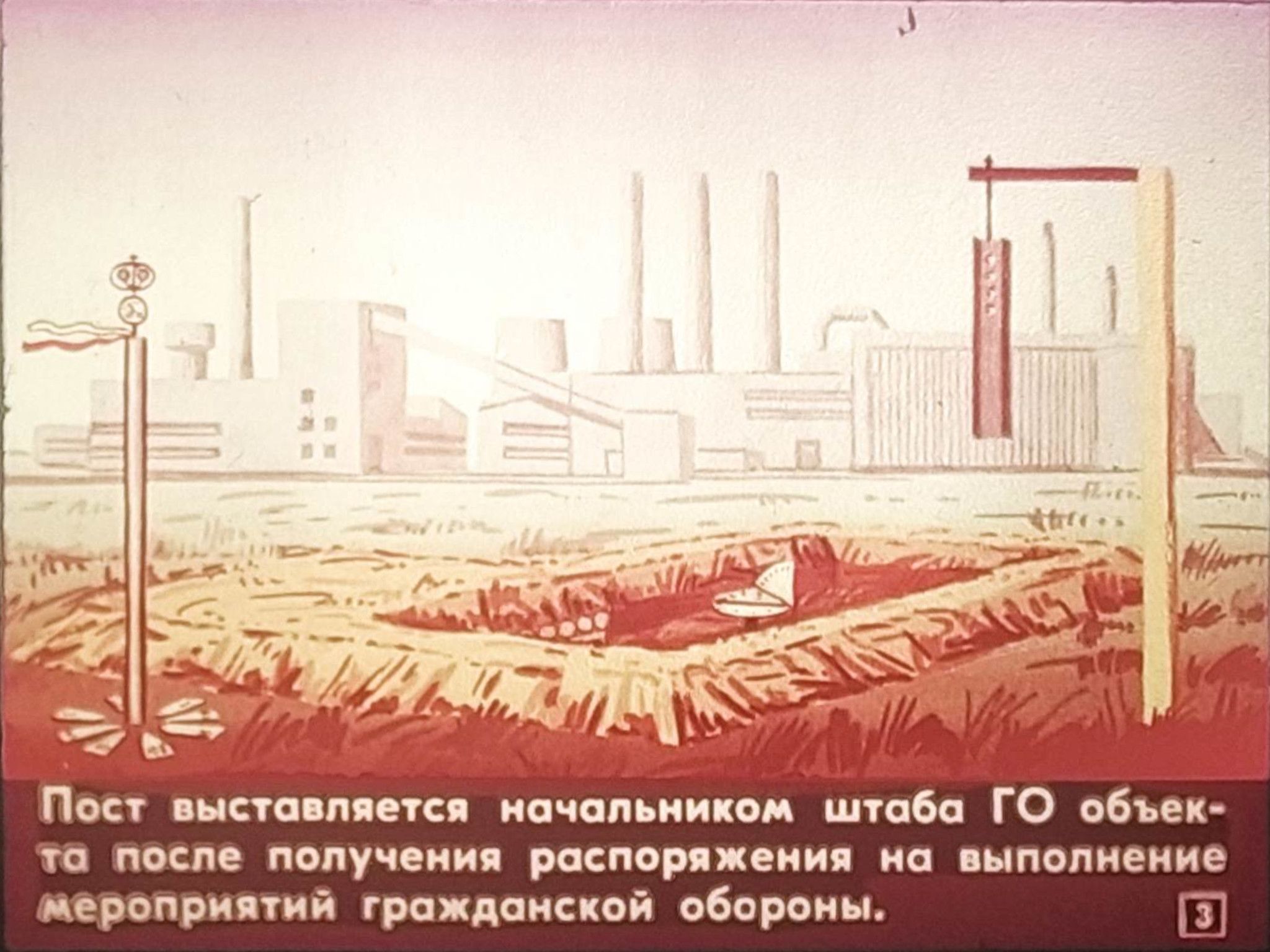
The post consists of three people: a chief, a scout-dosimetrist and a scout-chemist. Only the best people are appointed as the chief of the post.

Equipment of the observation post:
- DP-5B dosimeter
- VPChR chemical reconnaissance device
- Set of ID-1 personal dosimeters

Means of individual protection:
- GP-5 gasmask or R-2 respirator (mistake in the film, mask portrayed is actually ShMS)
- L-1 protective suit
- AI-2 med kit
- Protective glasses
- IPP-8 decontamination kit

Devices for measuring the nuclear blast:
- Azimuth meter
- Compass
- Stopwatch

Weather kit:
- Anemometer
- Stopwatch
- Thermometer
- Weathercock

Means of communication

In the post it is necessary to document the following:
- A radiation log
- A log of chemical observation
- A log of meteorological observations.
- A map of landmarks

The main tasks of an observation post:
- Detection of nuclear explosions
- Detection of radioactive and chemical contamination
- Determining the start and end time of the radioactive fallout
- Signaling of warnings "radiation hazard" and "chemical hazard"
- Determining the type of chemical hazard
- Determining the level of radiation
- Meteorological measurements

In order to protect the personnel of the observation post, a simple protective structure must be prepared in advance.

Actions of the observation post's personnel during a nuclear explosion.

Upon hearing the signal "air raid" personnel of the observation post take cover in the protective structure. The observer puts on protective glasses, readies the stopwatch and prepares to observe.

Upon seeing the nuclear blast, immediately triggers the stopwatch and ducks down in the trench.

With the arrival of the blast wave stops the stopwatch, determines the time from the moment of the flash, to the arrival of the blast wave. As well as the time of the explosion itself in hours and minutes, then reports to the chief of the observation post.
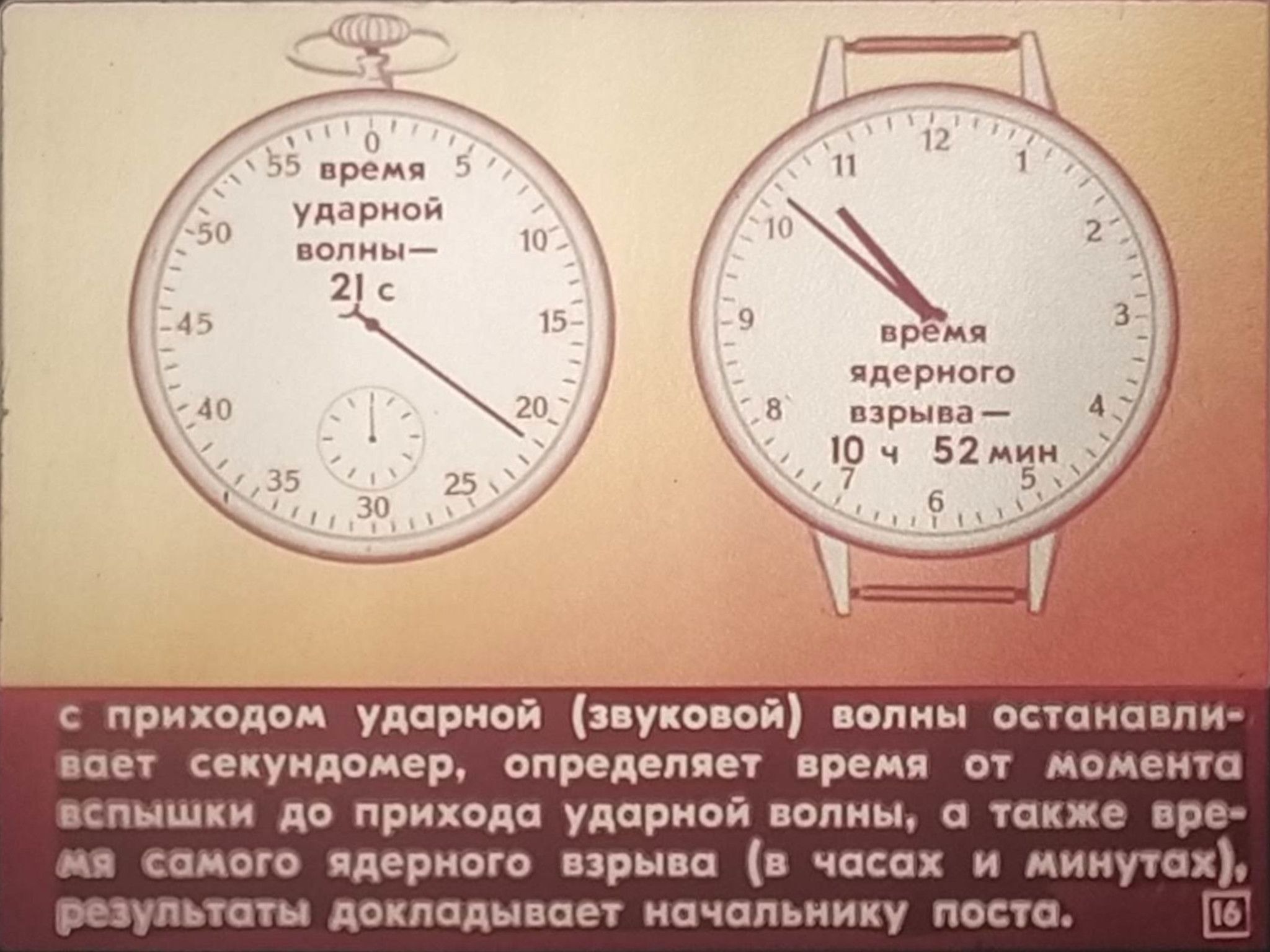
By it's characteristics determines the type of the explosion.

As soon as the enemy uses a nuclear weapon, the head of the observation post immediately reports to the headquarters of civil defense.

A second observer determines the magnetic azimuth of the mushroom cloud.

After a period of time measures the angle of the mushroom cloud and the horizon.

The chief fills in the characteristics of the explosion in the logs.
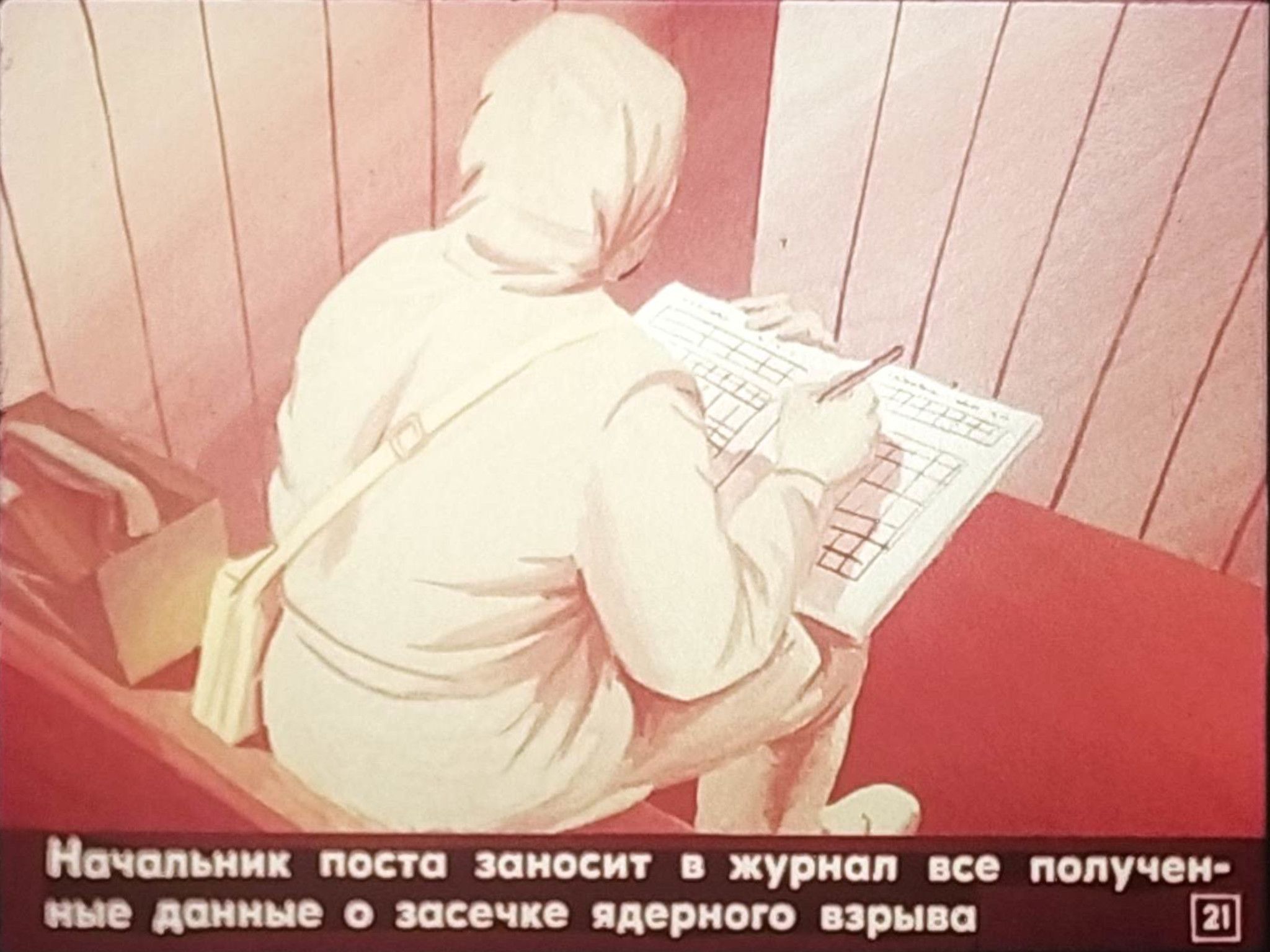
And then calculates it's yield.

The head of civil defense of the facility contacts the headquarters and reports the magnetic azimuth and yield of the explosion.
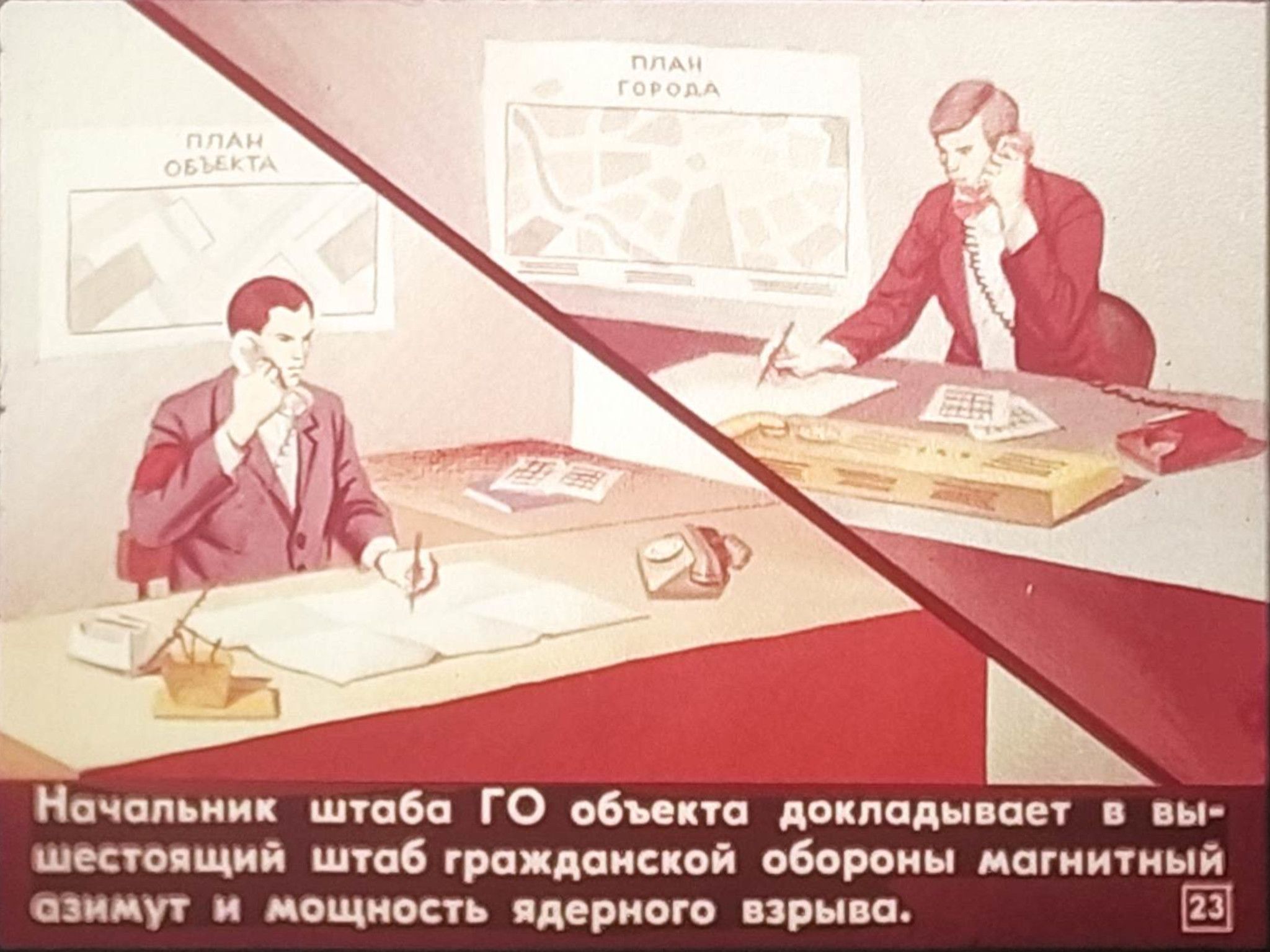
With the dosimeter DP-5B determines the amount of radioactive contamination around the post.

If the dose rate reaches 0.5 Rontgen per hour, the chief notifies higher the civil defense headquarters.

The decision to broadcast a signal "radiation hazard" is made by the objects civil defense headquarters. The signal is broadcast via radio and telephones.

The staff of the post uses surrounding objects to give a signal.

If the dose rate is higher than 50 Rontgens per hour, measurements are done in an anti radiation shelter while taking into account the attenuation factor.

And by doing short measurements outside.

The end of the radioactive fallout is determined when the dose rate reaches it's maximum.

The measurements should be taken 1-2 times per hour.

Actions of the observation posts personnel upon noticing chemical contamination.

When signs of a chemical weapon used by an enemy appear, the personnel of the post immediately puts on chemical protection equipment.

For detecting chemical contamination a military chemical reconnaissance device VPChR is used.

If chemical contamination is detected the post independently gives a sign "chemical hazard".

After which reports to the civil defense headquarters of the object.

The post determines the presence of the substance and it's concentration in the air.

And on the ground.

Then determines the direction in which the contaminated air is traveling.

When working with the device in poorly lit conditions a flashlight must be used.
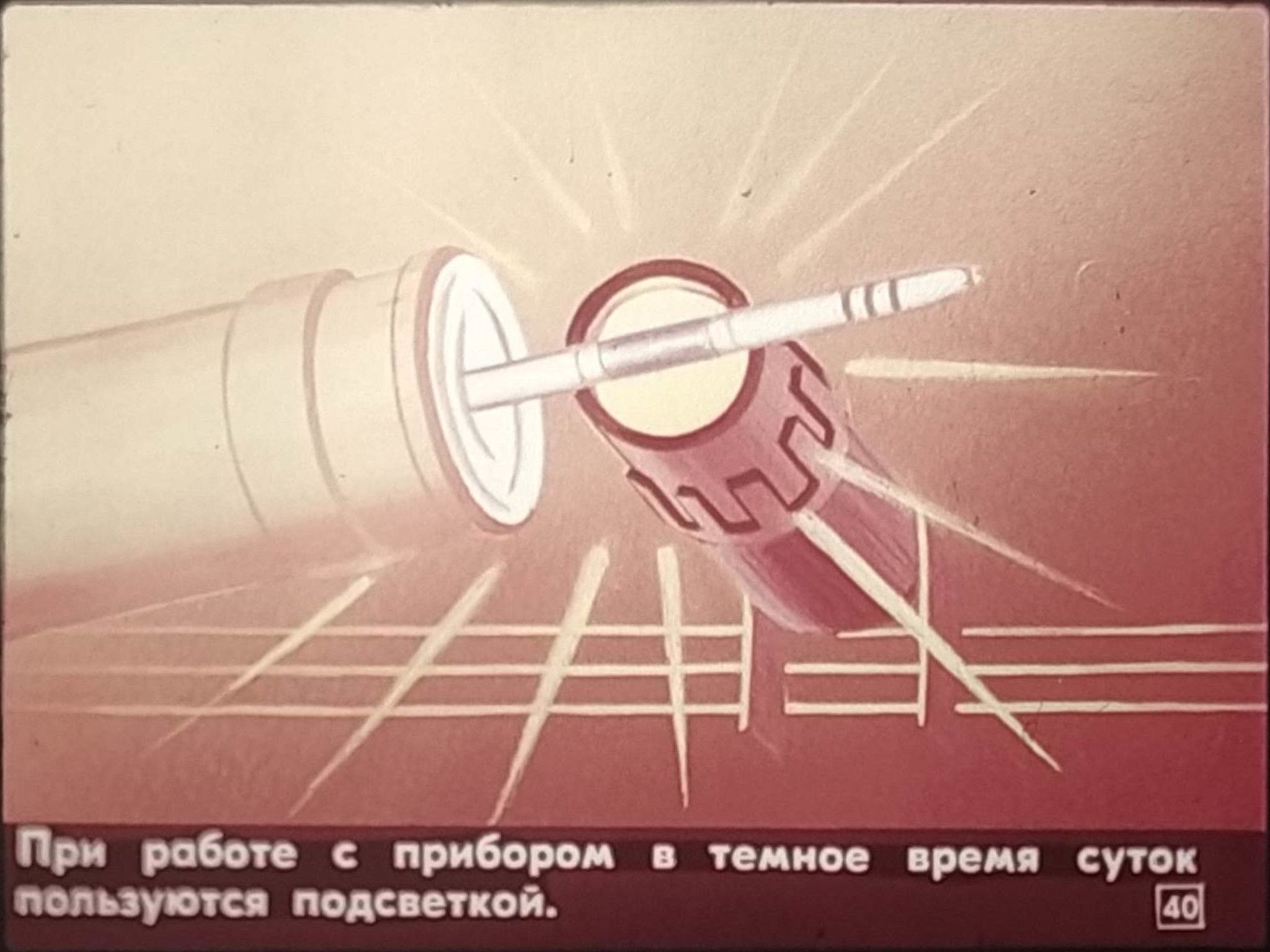
When working in low temperatures a heating block must be used.

Periodic meteorological measurements are carried out.

All the data obtained by the personnel of the post is recorded in the appropriate logs, which are reported to the senior chief and taken into account by him when making basic decisions on protecting people and while gathering intelligence.

The END
Success!
Your comment has been received and is currently under review!
Error.
Something went wrong. If you think this is a mistake please contact us -[email protected].

